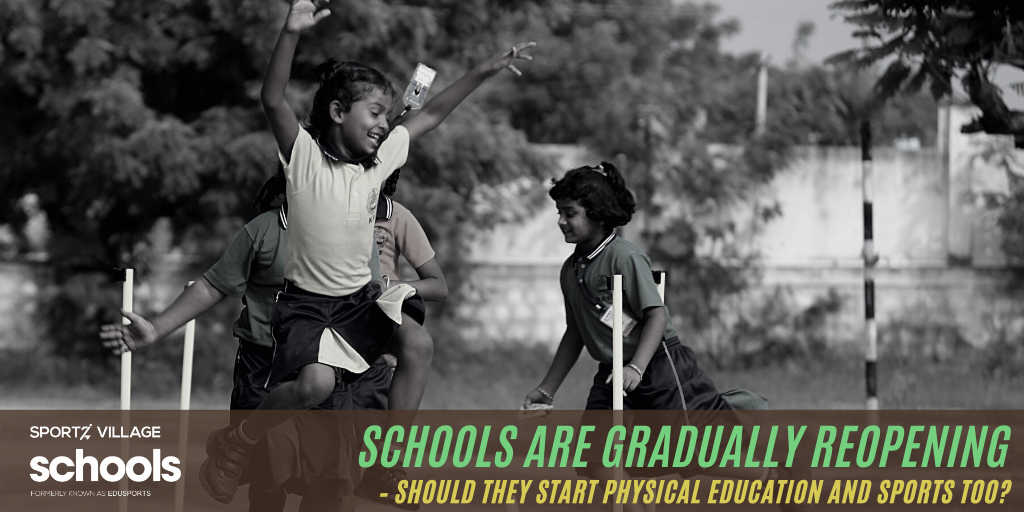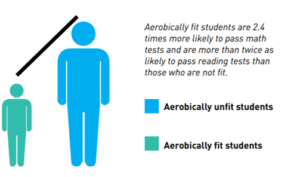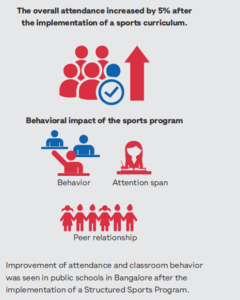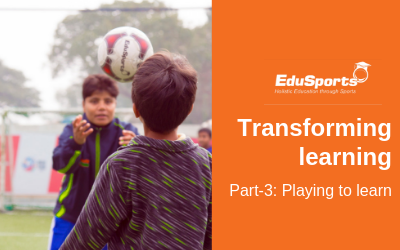“To succeed is to have failed” – learning from failures

Schools are Gradually Reopening – Should they start Physical Education and Sports too?
The year 2021 has started on a positive note with schools in several states of India re-opening, in a staggered manner. However, it is of utmost importance that school leaders give sports and physical education the same priority as academics, especially in the current scenario.
Along with several physical and mental health benefits, sports and nutrition are the two elements that can boost a child’s immunity. World Health Organization1 recommends a minimum of 60 minutes of reasonably rigorous playtime every day for a growing child to be healthier and fitter. Moreover, according to a 2019 study in the US2, children who were not involved in exercising were twice as likely to have mental health problems such as anxiety and depression compared to their counterparts.
In addition to reducing anxiety and depression among children, sports or play also helps with stress reduction, improvement in confidence and higher self-esteem. The reason being, any physical activity or sports help produce endorphins within the body that leads one to feel happy and positive. Additionally, by instilling the values of sportsmanship, discipline, and leadership, play or sport also becomes instrumental in the social-emotional development of children.
Sports or physical education not only contribute to a child’s health, immunity, and fitness but also to his/her academic performance. Physical education or sports is an important part of modern education. There are several studies that prove a direct and positive correlation between sports and academic performance.
For instance, “According to research done by Budde et.al3, aerobically fit students are 2.4 times more likely to pass math tests and more than twice as likely to pass reading tests than those who are not fit. Also, 20-40 minutes of brisk walking is said to improve mathematical performance in children.”

Moreover, studies have also shown that participation in sports on a weekly basis is associated with higher GPAs in English and Mathematics4.
Sports can also be used as a tool to meaningfully engage with children and improve their attention span, attendance, and peer relationships. Additionally, studies have also shown that structured physical activity can improve a child’s classroom behavior by approximately 20%5.

According to the Institute of Youth Sports 20096, most children enjoyed going to school after the inclusion of sports in their timetable.
Sports or play helps build the 21st century skills in children. Play also helps develop the 3Cs of learning in children- Critical thinking, Collaboration and Creativity. Various concepts of science and math such as speed, velocity, gravity, and kinetic energy etc. can be taught to children with the help of sports. In fact, the National Education Policy 2020 also acknowledged the power of play as it included sports and physical activity as an integral part of the education of a child. Play can be an instrumental tool to develop formative assessments that focuses on the 360-degree development of a child.”
In conclusion, integrating play or sports in the core academic curriculum will help educators better understand the thought process and the learning process of a child, thereby leading to his/her holistic development.

Krish Iyengar,
Business Head, Sportz Village Schools
References:
- https://www.who.int/dietphysicalactivity/physical-activity-recommendations-5-17years.pdf
Movement and mental health: Behavioral correlates of anxiety and depression among children of 6–17 years old in the U.S – https://www.nytimes.com/2020/03/02/well/family/the-benefits-of-exercise-for-childrens-mental-health.html# :~:text=Zhu%20was%20the%20first%20author, who%20met%20the%20exercise%20guidelines.
https://www.sciencedirect.com/science/article/abs/pii/S1755296619300067
- Budde, H, Voelcker – Rehage, C, Pietrayk– Kendiziorra, S. Ribeiro, P. Tidow, G. Acute coordinative exercise improves attentional performance in adolescents. NeurosciLett. 2008 441:219-223.
- California State University, Sacramento | Sacramento State (csus.edu)
- The National Academies Press (nap.edu)
- Chance to Shine: 3 Year Impact Report. Institute of Youth Sports 2009







